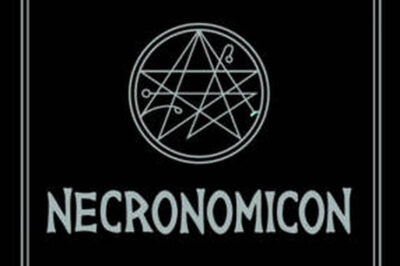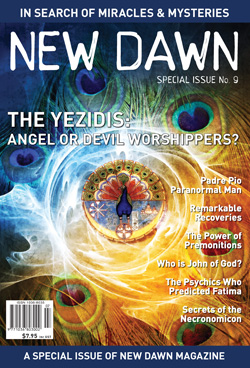From New Dawn Special Issue 9 (Sept 2009)
In 1977, America had barely heard of Iraq or of Saddam Hussein. The first Gulf War was more than a decade away; the second, more than twenty-five years away. The attacks on the World Trade Centre in New York City – the first during the administration of American President Bill Clinton, the second during the administration of George W. Bush – were likewise in the distant and unimaginable future.
In New York, those of us who lived there were consumed with news of the Son of Sam killings: a spate of cultic serial murders that thrummed the nerve endings of the “city that never sleeps.” There is a reason for this metropolitan insomnia. Dangers lurk in the darkness of our dreams. Like characters in a Freddy Krueger film, we are afraid to close our eyes lest our nightmares prove fatal.
But seeds were being sown like dragon’s teeth in that forgotten decade of the 1970s. The Soviets invaded Afghanistan, and the contours of the twenty-first century were being drawn like a blueprint for Armageddon. With the end of the Afghan conflict came the rise of the Taliban, and eventually of Osama bin Laden. A “mad Arab,” indeed!
Yet in 1977 the attention of a relatively small number of occultists had been drawn to a document whose spiritual focus was the country now known as Iraq but known to its author as Babylon. That the single-most influential occult text of the last three decades should have been a grimoire whose origins are to be found in the ancient civilisations of Iraq may be proof enough of its supernatural origins. Like Aleister Crowley’s Book of the Law and its prophetic utterances concerning the 1940s and the 1980s, the Necronomicon gave us a panicked and desperate warning about the dire consequences of opening the Gate: a Gate that had been opened before, in Iraq.
Of course, H.P. Lovecraft had “invented” the Necronomicon, and thought little of those who were absolutely certain that it existed in reality. So much ink has been spilled already (much of it by myself!) in claims and counter-claims concerning the book’s authenticity that it would be tiresome to repeat those charges, or to defend them, here. There has also been a concerted attempt to “unmask” me and reveal my “true” identity. The assumption seems to be that revealing my identity will go some distance towards proving or disproving the Necronomicon’s authenticity. Like many such assumptions, it is based on a false premise. Is a search for Thomas Pynchon’s home address a viable strategy for determining the worth of Gravity’s Rainbow? Even then, the analogy falls apart since Pynchon is undoubtedly the author of that encyclopedic novel, and not merely the editor. But what if “Thomas Pynchon” was the author’s nom-de-plume, like George Sand or one of Stephen King’s many aliases? Would that disqualify Gravity’s Rainbow as a major literary work of the twentieth century?
In any event, the story of the Necronomicon and its discovery is told at length in my Dead Names. Much supporting documentation is provided, and anyone with a genuine desire to prove the facts of the case need only begin with the references given there. Rather, I would prefer to speak of the mysterious nature of the text, in deference to the theme of this issue of New Dawn magazine.
In Gates of the Necronomicon, I write of the nature of magic and the occult. We agree that there is a world we can see, and a world we cannot see; and that actions that take place in the world we see can influence events in the world we can’t see, and vice versa. The former is called magic. An example of the latter is astrology, or divine intervention, or even “coincidence.” There is a point of tangence between these two worlds which is referred to by many cultures as a “gate.”
The word “Babylon” refers to a Gate: bab-ilu, or “gate of the gods.” The science of sacred space may have had its first written origins here, for Babylon was a Gate and the city of Cutha was also a Gate: a Gate to the Underworld, the site of a massive necropolis and a city sacred to Nergal, the God of War. I have suggested that the infamous Lovecraftian term Cthulhu may, indeed, refer to Cutha and its associated realm of the Dead.
We know there is a world we cannot see because of death itself. If no one died, if all were immortal, there would be no recognition of an afterlife and thus no “other world.” It is death that provides us with a glimpse of other possibilities and which motivates us to do what we can to postpone death as long as possible so that we may discover the true nature of the afterlife: so that we may have dominion over it or at the very least communication with it. In ancient times, that task was given to the magician, the sorcerer, the shaman, the occultist.
With the scientific revolution came the division between science and spirituality. The Church had famously attacked scientific discoveries because they contradicted biblical statements. The scientists thus were forced to extricate themselves from ecclesiastical bondage, but not before a group of scientists tried mightily to integrate the two. One need only think of Elias Ashmole or Isaac Newton to understand the degree to which spiritual men struggled with the task of using science to understand theology, and vice versa. The noble art of alchemy is one of the most obvious attempts to explain the one with the other. Today, quantum mechanics and the movement known as quantum consciousness is a modern attempt to accomplish the same mission.
With these latest discoveries, we come to see that the “gate” can be accessed through our own physiologies. The microtubules that are part of our brain’s neurological system may represent the physical means of reaching through to other realities and are, according to proponents of quantum consciousness theories, quantum computers. They may provide a biological link to such quantum phenomena as non-locality, among others. There is evidence to suggest that they are involved in information processing and communication on a scale far beyond our “rational” imaginings, but known only too well to those who Walk the Gates.
Thus, the Lovecraftian characterisation of the “Mad Arab” may be explained by using this model to amplify what so many since then have insisted: that to attain altered states of consciousness one needs to go temporarily insane. One needs to break down the superstructure of social expectations and norms in order to “see” clearly that which society has deemed harmful, or evil, or unclean. Kenneth Grant has understood this quite clearly and has expressed this in a detailed manner in his many books that unite Lovecraftian concepts with Hindu Tantra and western ceremonial magic. He has understood the connection between the Necronomicon and these extra-dimensional workings of the dark magicians who travel in unknown manner to unseen realms.
That all of this may be linked to human DNA and the legacy of our ancient ancestors going back to prehistoric times is another field of conjecture. The chanting of ancient Sumerian and Babylonian incantations may stimulate long-buried memories of rituals that took place among the ziggurats and shrines of Mesopotamia and what is now Iraq. The invasions of Iraq, the intense bombings, and the looting of the museum in Baghdad may have activated these sacred spaces and contributed to a growing sense of unease around the world as the old gods – dead but dreaming – are shaken violently awake from their millennial slumbers. Conversely, the summoning of these dark forces by priests and magicians Walking the Gates may have resulted in the desperate attempt by the western world to control and “pacify” the lands of ancient Mesopotamia and Babylon as the ancient deities struggled to proclaim their existence on the earth.
That there is a link between the Necronomicon and today’s Iraq is not in question. The Necronomicon and its Babylonian mythos was published in 1977, long before Iraq made international headlines on a daily basis. Thus the connection between the two can only be a supernatural one, however we define that term. It may be a result of the discovery of the text; or the discovery of the text might have been a prediction of what was to occur. Either way, there is a message encoded in the rituals and concepts of the Necronomicon. The message may reveal a solution to the conflict in the Middle East. Or it may be that the Middle East conflict is a metaphor for a deeper spiritual struggle – a jihad – taking place within our own hearts and minds as our modern sensitivities wrestle with our ancient instincts.
However we characterise it, a Gate has been opened. It has physical and biological components as well as purely spiritual or psychological ones. Indeed, at this level, there are no differences among these various parameters for understanding the world. It will take determination, skill, and a little madness to confront the demons that are slithering through the narrow window of opportunity like those that preceded the goddess Ishtar when she ascended from the Underworld.
The last thirty-two years have seen tremendous advances made in science and technology, as well as a renaissance of occultism and other spiritual practices. I am proud of the contribution made to this effort by the Necronomicon and by its many and varied practitioners around the world.
Good hunting!
© New Dawn Magazine and the respective author.
For our reproduction notice, click here.



